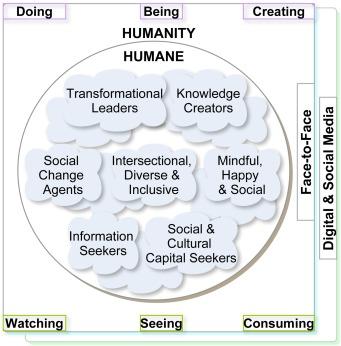How to Train Educators to Foster Emotional Wellbeing: Strategies for Classroom Success
Emotional wellbeing in the classroom is the cornerstone of a supportive and inspiring learning environment. As more research highlights the connection between emotional health and academic performance, it becomes essential to train educators to foster emotional wellbeing.This article explores proven strategies, actionable tips, and real-world examples to empower educators to create classrooms where students feel safe, valued, and ready to learn.
Why emotional Wellbeing Matters in Education
When students feel emotionally secure, they are more likely to participate, engage, and achieve their full potential. Emotional wellbeing:
- Reduces behavioral issues and anxiety
- Improves focus and academic achievement
- Supports positive relationships among students and teachers
- Encourages resilience and healthy coping strategies
These outcomes are not automatic—they stem from classrooms where teachers intentionally nurture a supportive culture. Educator training in emotional wellbeing is the key to unlocking these benefits.
Core Components of Training Educators for Emotional Wellbeing
Effective training programs equip teachers with tools, knowledge, and confidence to address student well-being. the following components are foundational to any professional progress for educators targeting emotional health.
1. Understanding Emotional Wellbeing
- Define emotional wellbeing and its impact on learning.
- Recognize signs of emotional distress in students.
- Explore cultural and individual factors that affect emotional wellness.
2. Social-Emotional Learning (SEL) Strategies
- Integrate SEL curricula into daily lesson plans.
- Teach self-awareness, empathy, and responsible decision-making.
- Model positive communication and conflict resolution.
3. Trauma-Informed Practices
- Recognize the effects of trauma on learning and behavior.
- Apply trauma-sensitive communication and classroom management techniques.
- Build trust and predictability into the school environment.
4. Mindfulness and Stress-Reduction Techniques
- Incorporate mindfulness exercises into the school routine.
- Train teachers to manage their own stress as well as support students.
- Promote healthy habits that contribute to overall wellbeing.
Effective Strategies to Train Educators
Training educators goes beyond a one-time workshop. Lasting success comes from ongoing support,practice,and reflection. Hear are top strategies for classroom success:
1. interactive Professional Development Workshops
- Include role-playing scenarios to practice real responses.
- Offer case studies highlighting diverse classroom challenges.
- Facilitate group discussions to share experiences and solutions.
2. Peer Mentoring and Coaching
- Pair experienced teachers with newcomers for guidance.
- conduct classroom observations with constructive feedback.
- Foster collaborative problem-solving on wellbeing challenges.
3. Integrating Digital Tools and Resources
- Leverage e-learning modules on emotional health topics.
- Use mobile apps for mindfulness and emotional check-ins.
- Share digital resource libraries for continual learning.
4. Leadership Support and School Policies
- Encourage school leaders to champion wellbeing initiatives.
- develop policies that prioritize teacher and student mental health.
- Allocate time for wellbeing discussions during staff meetings.
Practical Tips for Teachers: Fostering Emotional Wellbeing in the Classroom
Once educators are trained, implementing daily practices is crucial. Here are practical and actionable tips for teachers:
- Start each day with a “check-in” to gauge students’ emotions.
- Infuse positive affirmations and gratitude exercises.
- Set aside “calm corners” or relaxation spaces in the classroom.
- Practice active listening and validate student feelings.
- Collaborate with counselors and support staff when needed.
- Assign projects around empathy and kindness.
- Celebrate small successes, fostering a sense of accomplishment.
Benefits of Training Educators to Foster Emotional wellbeing
Investing in educator wellbeing training pays dividends for the entire school community:
- Improved Student Outcomes: Higher academic achievement, better attendance, and increased motivation.
- Positive School Climate: Reduced bullying, increased inclusivity, stronger teacher-student relationships.
- Teacher Retention: Supportive environments help teachers feel valued, reducing burnout and turnover.
- Lifelong Skills: Students and educators alike learn coping, self-regulation, and compassion that extend beyond the classroom.
Case Studies: real-World Success Stories
Case Study 1: Elementary School SEL Implementation
An elementary school in Oregon introduced a targeted SEL program paired with professional development on trauma-informed teaching. After one year, suspensions dropped by 40% and student engagement scores rose markedly.
Case Study 2: Mindfulness in Middle School
A California middle school integrated daily mindfulness activities through teacher training workshops. Students reported reduced anxiety, and teachers noted more focused classrooms and greater emotional resilience among students.
Case Study 3: Peer Mentoring for Educator Wellbeing
A large urban district paired novice educators with experienced mentors,focusing on emotional support and classroom management. Teacher satisfaction and retention rates climbed as teachers felt more equipped to handle emotional challenges.
First-Hand Experience: An Educator’s Outlook
“after attending a workshop on fostering emotional wellbeing, I introduced daily check-ins with my students. The positive shift in our classroom was almost immediate—students opened up, showed greater empathy, and conflicts decreased.Emotional wellbeing isn’t an add-on; itS an essential part of teaching.”
– Jessica, 5th Grade Teacher
Conclusion: Building a Future of Emotionally Healthy Classrooms
Fostering emotional wellbeing in schools starts with training educators in strategies that create safe, nurturing, and inclusive classrooms. When teachers are equipped with the right tools and support, they can address emotional challenges, nurture positive development, and inspire both personal and academic growth in their students.
By prioritizing emotional wellbeing through targeted training, practical implementation, and a supportive school culture, we empower not just students but the entire education community. Let’s invest in professional development for educators so every classroom can become a haven of emotional health and classroom success.
Ready to Transform Your School’s Emotional Climate?
Explore more resources and professional development opportunities for educator emotional wellbeing. Together, we can shape a brighter, healthier future for every student.

